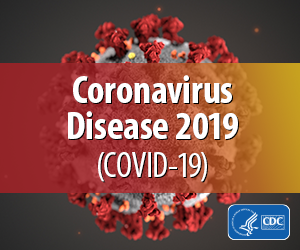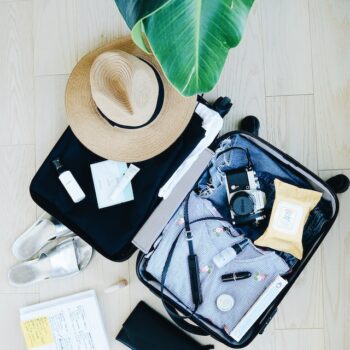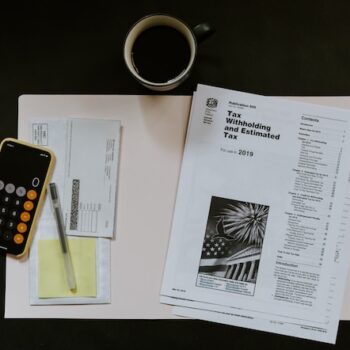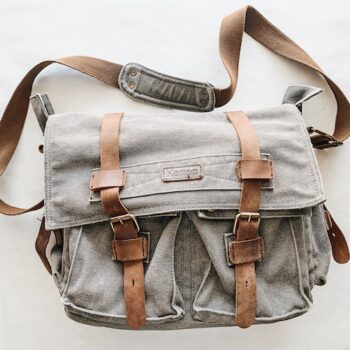
“Everything we do before a pandemic will seem alarmist. Everything we do after will seem inadequate” – Rear Admiral W. Craig Vanderwagen 2007
Medications
Protection and Disinfectants
Supplies
Food
Coronavirus! Of all the things we prepare for, a coronavirus pandemic was not one we were expecting. On Feb 25th, 2020, the CDC announced that the public should begin to prepare for coronavirus, and be braced for the likelihood that coronavirus will spread to communities with the possibility of significant disruption to Americans’ daily lives (link). It is time to prepare. Not being an expert in coronavirus, much of this information is a compilation from different sources (which are linked as reference) which helped to develop the supply lists at the bottom of this page.
Compared To The Flu?
Keeping everything in perspective, the regular flu (influenza) affects as many as 41 million people in the US per year and results in as many as 41,000 deaths annually (link). That’s a staggering number of flu cases. The difference between the flu and the new coronavirus is that our bodies are somewhat accustomed to the flu. We can also try to protect ourselves from the flu with a vaccine that helps prevent 40-60% of us from getting sick (link). Plus we have established treatment protocols and medications for treating severe cases of the flu. COVID-19 is something new. It’s not something our immune systems have dealt with before and as of 2/25/2020 Congress has been informed a vaccine is still 12-18 months away.
The American Hospital Association’s “Best Guess Epidemiology” estimates 96 million coronavirus cases with 480,000 deaths within 2 months of the first wave (link). They are recommending that hospitals prepare for a disease burden 10 times that of the flu.
Fortunately, if COVID-19 arrives here, many of us will hopefully be asymptomatic or just have mild to moderate symptoms should we get infected. The virus can manifest in the lungs even in asymptomatic patients (link), so avoid going out even if you only have mild symptoms. If it arrives while we are still in a regular flu season, we’d have two seasonal epidemics to deal with. That seems to be the direction that the experts are leaning; that COVID-19 will eventually settle into being of our seasonal flu landscape (link).
Why Prepare?
Initially, COVID-19 would put a heavy of strain on our health care systems, our workforce, and supply chains. And depending on how well (or poorly) the government handles COVID-19 cases, the first wave will likely cause a bit of panic buying, resulting in empty grocery store shelves like those we’ve seen in places like Asia and Europe.
So, essentially what we should be preparing for is the initial panic response once COVID-19 arrives and getting through the first wave. The first mention of a town or city with locally transmitted infections, and store shelves will be emptied in a few hours.
Before that occurs, we’d want to have enough essential supplies on hand in the event of shortages and in doing so, we would reduce our risk of exposure by not needing to venture out as often to pick up supplies. We just want to be better prepared to protect ourselves and our family IF the situation warrants. We’d rather have a few too many supplies on hand (that won’t go to waste either way) than be without them if the situation changes. Our game plan is fairly simple: Risk Reduction And Preparation
This information may seem a bit excessive, but you don’t need to do this for the rest of your life. Just until the initial wave of infections and public panic has ended, and vaccines and established treatment protocols are available.
Ready.gov Recommendations
The government has updated its Ready.gov website (link)to include recommendations of what to do to prepare before a pandemic arrives.
- Have two weeks of water and food on hand.
- The lockdown in Wuhan has extended to over four weeks. You can sanitize your own water using 1/8 tsp bleach per gallon water if you’re worried about having water on hand.
- For an estimate of how much food to have on hand, visit the Food Preparedness Calculator
- Make sure you have a continuous supply of your regular prescription drugs.
- Coronavirus impact could lead to shortages of over 150 prescription drugs (link) Stock up, and switch your prescriptions to be automatically refilled via mail order to ensure a continuous supply while also avoiding pharmacies. Ask your doctor to give you an extra month of prescriptions.
- Have any nonprescription drugs and other health supplies on hand, including pain relievers, ibuprofen, stomach remedies, expectorants and cold medicines, fluids with electrolytes, allergy medication, topical antibiotics, and vitamins.
- While you can’t treat the flu with OTC medications, you can lessen the side effects and feel a little better while recovering. Anything just to feel a little better until you actually get better. Get them before they are in short supply. Expectorants can help cough up fluids from the lungs (where coronavirus strikes), but expectorants can also dehydrate so have electrolytes on hand.
- If the health care system becomes overwhelmed, be prepared to treat minor injuries at home.
- Get copies of all your relevant health records
- If your condition worsens and you have to go to a doctor or hospital, doctors will need to know about pre-existing conditions, allergies, blood work, and previous test results in order to provide proper care while avoiding complications with conditions you may already have. If the health system is strained, you may not get to see your preferred doctor who is familiar with your medical history. Mistakes are possible; medical records that document other health conditions are important.
- Plan on how you or your family will be cared for in your home should anyone get sick.
- If health care facilities get overwhelmed, patients with mild to moderate symptoms may have to get treated at home. On 3/8/2020, Italy’s emergency response plan including triaging ICU cases for those most likely to survive. Have supplies on hand to help family recuperate while containing the spread in your household.
Risk Reduction
Risk reduction really just boils down to reducing your exposure, whether it’s contact with infected people or contaminated surfaces and limiting contamination within your own home. By having supplies on hand in advance you won’t need to go out to stores as often, automatically reducing your possible exposure.
How Long Can Coronavirus Survive On Surfaces
This is really the important part of prevention; just think of how many surfaces you touch each day. Door handles, car door handles, shopping carts, payment terminals, pens in the office/checkout counter/doctor’s office, elevator buttons, escalator hand rails, tables and countertops, public restrooms, restaurant menus, your eyeglasses, your keys and wallet, stair rails, etc. Combine that with how many times a day a person touches their face (23 times per hour), there are too many opportunities to cross-contaminate yourself and your possessions, and self-inoculate with coronavirus.
So, we couldn’t find an exact number but anywhere from 3 hours to 9+ days seemed to be the range (depending on conditions) that the virus could survive on non-porous surfaces (link, link, link). The good news is that sanitizer can kill it within a minute. The most simplistic solution is to routinely sanitize your hands and the surfaces in your home, and avoid touching your face.
Hand Sanitizers And Disinfecting Wipes
When you’re on the go, use hand sanitizer. If disinfecting hand sanitizers are in limited supply, here’s a recipe to make your own.
For disinfecting surfaces in your home, two economical options are 70% ethyl alcohol (rubbing alcohol) and a bleach solution (1/4 cup bleach to one gallon of water) (link).
Porous surfaces aren’t as easy to clean as non-porous surfaces; studies have shown that fabrics, carpets, furniture, mattresses, and other porous surfaces can harbor a large amount of pathogens (link). You can launder curtains, bed sheets, and other fabrics to effectively kill most pathogens. But your mattress, carpet, and couch will need a different approach if they become contaminated. One option for color-fast items is improved hydrogen peroxide (link). Steaming with high heat will also kill pathogens, but a test area should be conducted beforehand to rule out damaging or discoloring fabric or causing shrinkage. Disinfectant sprays can also be used on porous surfaces.
Get In The Habit
…of not touching your face! If your nose itches, use your sleeve. If your eyes itch, use tissue. Just keep your hands away from your face. Don’t inoculate yourself. Sanitize your hands regularly. Use your sleeves to open doors; use a pencil to push elevator buttons; bring your own pen to doctors offices; sneeze or cough into the crook of your elbow.
Face Masks
The CDC is currently not recommending the general public wear face masks (link). They want to ensure that there are enough masks for the health care workers that need them the most, and also because the general public doesn’t necessarily know how to put on or take off masks properly. With that in mind, the CDC could change their position if locally transmitted cases become common. Several regions in China required that masks be worn in public.
However, “…nearly half (48 percent) of the airborne samples captured in the air around flu patients who were just breathing — not coughing or sneezing — contained detectable influenza virus…” (link). They didn’t mention the concentration of the virus from breathing, but it’s something worth considering when going out in public.
When someone does cough or sneeze, they can send up to 100,000 germ droplets into the air at up to 100 miles an hour. And depending on the size of the droplets, these can remain suspended in the air from a few seconds to weeks (link). On a side note, follow the previous link to see why they recommend closing the toilet bowl lid before flushing!
Surgical Masks Aren’t Snug
Regular surgical masks aren’t meant to and aren’t snug enough to keep out viral particles (link); they are actually meant to protect a surgical patient from getting pathogens from the surgeon wearing the mask. If you decide on surgical masks, get Level 3 masks that have a fluid barrier. N95 masks have a tighter fit and are meant to filter out airborne particles such as respiratory pathogens (link).
Pros And Cons
Two main benefits of wearing a mask is that they limit the spread of infection by the sick (if they wear the masks), and you are less prone to self-inoculating via mouth/nose if you are wearing a mask (if you put it on and take it off properly).
The downside to masks is that most people don’t know how to wear them properly and have a false sense of security while wearing them (possibly exposing themselves to more risk). Should the outside of your mask become contaminated, you can actually spread that contamination by improperly removing your mask. WHO has some information on their website regarding proper mask use.
If you do decide to wear face masks…
- Sanitize your hands with hand sanitizer before putting on the mask
- Only touch the ear loops on the mask when you pick it up and put it on
- The colored side of the face mask is worn on the outside
- While your hands are still sanitized, seat the metal nose band for a secure fit
- Sanitize your hands before you take off the mask, and (again) only touch the ear loops of the mask
Eye protection would also be a good idea. Wearing glasses or sunglasses while walking out in public might protect against larger airborne particles from reaching your eyes.
Reusing Face Masks
Most masks are considered disposable and shouldn’t be reused. However, there is some official guidance on reusing masks, especially if they are in short supply. Again, cross contamination is the biggest issue. If you touch your mask after touching a possibly contaminated surface, your mask must be thrown out. If you’ve been in high-risk locations, your mask is likely contaminated and should be thrown out.
Never touch your mask while you are wearing it. The only part of your mask you should ever touch are the ear loops and only after you have sanitized your hands. If you need to seat the metal nose band for fit, apply hand sanitizer first. Make sure your hands are also sanitized before taking the mask off; again, only touch the ear loops. To be safer, wear a surgical mask on top of your N95 mask. (link) As long as the mask did not get wet and wasn’t worn for more than 4-6 hours in high-risk locations (hospitals), one site suggests they can be disinfected with 30 minutes of UV light or spray disinfectant (link) in the event of a severe mask shortage. Filtration will not be as effective, but possibly better than nothing(?)
When You Come Home
So you or your loved ones have been out and about, possibly touching surfaces that shouldn’t have been touched. If you have young children, it’s a given they’ve touched as much as they possibly could. Your home should be the one place that is free of the virus.
The rate of infection (how many people an infected person might also infect) of COVID-19 is thought to be around 2-3%. In a household, the rate of infection jumps to 12%. For this reason, it is important to take steps to stop COVID-19 from coming into your home and instituting containment measures should someone in your household become ill.
First, keep a tub of hand sanitizer wipes by the front door. Everyone coming inside should sanitize their hands immediately.
Then sanitize anything you’ve touched. Your door handles, the faucet handles, the toilet handle, remote controls, light switches. Sanitize your cell phone (that you’ve touch 2000 times each day), your wallet, your eyeglasses, your keys, anything you may have touched while out. Dollar bills, made of paper, and coins could possibly also harbor the virus. China is already sanitizing its money. Use an aerosol disinfectant for coins and bills you received as change from the store.
Again, this probably seems a bit excessive and paranoid, but you don’t need to do this for the rest of your life. Just until the initial wave of infections and public panic has ended, and vaccines and established treatment protocols are available. Your home should be a place where you can have some feeling of being safe and some semblance of normalcy. Insuring you don’t bring contamination inside is the best starting point.
Preparation
The most important part of preparation is to have the supplies you and your family need in the event access to these supplies becomes disrupted. It is equally important to maintain as much as possible a sense of normalcy and routine. Comfort foods and favorite snacks can go a long way to reducing stress.
In general, you should initially prepare to stock at least two to four weeks worth of supplies. The exception to this includes any critical medications or items that currently are or could be in short supply (have extras of these on hand). Your list of items should include things that you envision needing to have on hand should you or your community be asked to stay home for two weeks. What would be needed to keep your household running smoothly? You should stockpile non-perishable items before you are impacted. As soon as the first infection in your community is confirmed, you should gather perishable items.
The suggested quantities in the lists below are based on the anticipated needs of two adults for 4 weeks. These are just suggestions. Modify the quantities to reflect the number of people in your household, their specific needs, and add items that are unique and are routinely used by your household.
Medications
The important part about having all your prescription and OTC (over the counter) medications available beforehand is that you won’t need to head out to the pharmacy later when they may be in short supply. Plus once there’s coronavirus in your community, there’s a pretty good chance that everyone else that is also headed to the pharmacy for meds may be sick, which also increases your potential exposure. Having these items on hand means you have quick access to them when you need them most, and you can reduce your risk of exposure to others who may be sick.
Have enough OTC medications for flu symptoms to treat at least one person for two to three weeks.
- Prescription medications
- Again, make sure you have a minimum of one month’s supply of medication on hand and if possible, have your doctor change your refills to be automatically sent via mail. There are several online pharmacies that offer this service for free, like Amazon’s PillPack. (haven’t ever used their service so I can’t recommend them one way or the other). There is also a possibility of a shortage of prescription drugs; ask your doctor if getting an extra refill now is an option.
- Pain relievers and fever reducers such as ibuprofen
- Stomach remedies such as tagamet
- Antihistamines
- Allergy medication such as Clartin or Bendryl
- Expectorants containing guaifenesin such as Mucinex
- Because the lungs are impacted, it is important to loosen congestion and encourage fluids out.
- Cold medicines
- Specifically those that help alleviate flu symptoms: Nyquil Severe and Theraflu.
- You can skip oscillococcinum, unless you believe 1 micron of muscovy duck heart and liver really helps flu symptoms (link).
- Additionally, everyone out there is going to try to sell their “miracle cure”, with claims that homeopathic or herbal remedies will help. Not only will they probably not help at with anything other than making your money disappear, but they could be contradicted for use with your current medication. When in doubt, ask your doctor.
- Fluids with electrolytes
- Any drinks that replenish electrolytes in the event of dehydration while sick. Expectorants that help people cough up fluids can also cause dehydration. Pedialyte powder packs are a convenient way to have electrolytes on hand without taking up too much space.
- Vitamins
- Any supplements that you would normally take
Protection and Disinfectants
- Disinfecting wipes
- Keep one tub in your car to wipe down the steering wheel, door handles, child car seats, stroller handles, etc.
- Keep another tub by your front door to wipe down hands and door knobs as soon as you get home.
- Hand sanitizer (60%-70& Isopropyl Alcohol – both for home and away)
- Rub into hands for at least 20 seconds and allow to air dry (do not wipe off) (link)
- Tip: buy the larger bottles and refill your smaller personal-sized bottles as needed.
- How to make your own hand sanitizer:
- Hand sanitizers contain 61% – 70% isopropyl alcohol.
- Bleach (or your preferred viral disinfectant)
- For disinfecting surfaces, add 1/4 cup bleach to one gallon of water
- Bleach can damage colored fabrics and cause corrosion on some metals. Use recommended concentrations and avoid toxic fumes
- Improved hydrogen peroxide (for sanitizing surfaces where bleach is not suitable)
- Isopropyl Alcohol (60%-90%)
- Can damage some plastic surfaces
- Disinfectant spray for porous surfaces
- Purse, diaper bags, money, etc
- Disinfecting hand soap
- Masks
- Preferably N95 rated. Anyone in your household that is sick should wear a mask. Optional whether to wear masks outside of the home, unless CDC recommends otherwise. However, these are in high demand so acquiring some now would be prudent. As of last week, retailers on Amazon kept running out. Ebay is a good option, but make sure you buy from a reputable seller and make sure you’re paying a reasonable price.
- Nitrile gloves
- If anyone in your household is sick, these provide protection for the caretaker who would have a higher exposure to contaminated materials.
Supplies
- The usual personal hygiene supplies
- Shampoo
- Conditioner
- Deodorant
- Toothpaste
- etc…
- Toilet paper
- Panic buying in Hong Kong resulted in a toilet paper shortage with a delay of almost 1 week before supplies were replenished. There was even an armed toilet paper robbery. Essentially, stock up unless you are okay with going without toilet paper for a week.
- The usual sundries used in the home:
- Laundry detergent
- Dish detergent (can also be used for laundry in a pinch)
- Trash bags
- Paper towels
Food
What and how much to stock up up for food items really depends on the size of your family, food preferences, and room for storage. It’s best to get non-perishable, shelf-stable items, and substitute canned or frozen fruits and veggies for those you would normally buy as fresh. In place of bread that is normally only fresh for a few days, substitute flour tortillas because as long as they stay sealed inside their wrapper they stay fresh for weeks. If you have a food vacuum sealer, use it to portion off cheeses and meats to help them stay fresh longer.
To get an idea of the basic food necessities you may want to stock up on, visit the Coronavirus Preparedness Calculator. It will provide suggestions on what quantities of basic ingredients to have on hand based on the ages of your family and size of your household.




